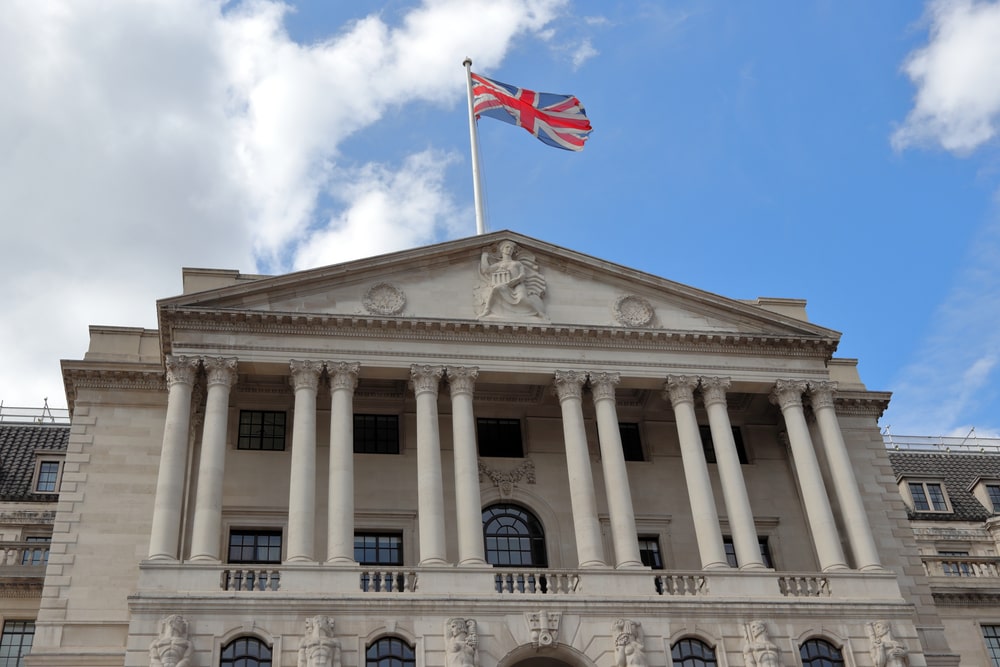

This article is only available to Macro Hive subscribers. Sign-up to receive world-class macro analysis with a daily curated newsletter, podcast, original content from award-winning researchers, cross market strategy, equity insights, trade ideas, crypto flow frameworks, academic paper summaries, explanation and analysis of market-moving events, community investor chat room, and more.
Summary
- We expect the BoE to hold the Bank Rate at 5.25%, likely with fewer voters backing a hike than at the last meeting (when it was 5:4 in favour of a pause).
- The MPR forecasts are likely to be far more dovish than in August. Higher unemployment and lower expectations of wage growth will be the main drivers. The positive impact of lower priced interest rates should be more than netted out by this.
- We continue to expect that the BoE is at terminal rate.
Market Implications
- We continue to see value in fading pricing for BoE hikes ahead.
- We like to be bearish GBP, expecting the downside to accelerate in Q4 (target 1.18 vs USD, target 1.61 vs CAD).
A BoE Pause and a Dovish MPR
For some time we have been dovish on the BoE. At the November meeting this week we expect they will pause, with fewer voters backing a hike than at the last meeting (when four voted for it). Thereafter, we see cuts as more likely than hikes at future meetings, which adds into our view that market pricing for future hikes can be faded.
The UK economy is showing signs of slowing, and this is set to continue into Q4 and beyond. With a softening economy and more dovish central bank, we think GBP downside will accelerate into Q4. We think GBP/USD can drop to 1.18, while GBP/CAD can drop to 1.61.
The market has taken recent data releases as mixed, but we consider them dovish. Inflation, on the face of it, looked more hawkish, but, as we noted, the detail remained dovish. We expect the BoE will likely focus on the latter, helped by the fact that the YoY core and headline numbers remain below the August MPR trajectory (Chart 1).
Meanwhile, ONS labour market data has been delayed, replaced and omitted. While that does not add much to the picture of the economy, it adds to the rationale for the MPC to lean on alternative sources. These sources suggest lower wage growth and continued labour market loosening (Charts 2 & 3).
The surveys also support re-anchoring inflation expectations (Chart 4). The BoE will have the latest DMP survey result (released Thursday) which are likely to further support this. Even before the BoE cast doubts on the efficacy of ONS wage data, we have had our reservations.
BoE Inflation Forecasts to Look More Dovish
The updated MPR will need to consider three key dovish factors:
- The labour market has loosened far more than the BoE had estimated in their August forecasts (Chart 5). This will suppress aggregate demand and ULC assumptions.
- Wage growth is likely revised down in their near-term estimates. At the August MPR, the MPC added an arbitrary wedge to their wage forecasts and increased the persistence of wage growth in their outlook. We noted back in August that the arbitrariness of the forecasts could mean it is rapidly unwound – we expect this process will begin now.
- Growth looks to have stalled in Q3, based on monthly data (Chart 6). ONS methodological revisions will mean it is shifted higher, but the trajectory ahead should remain stagnant.
The updated forecasts will also need to consider the more dovish pricing of the bank rate (Chart 7). That could lift the medium-term inflation rate. However, it is unlikely to make a significant difference given the fact that the ‘rates stable at 5.25%’ profile for inflation at the August MPR was almost identical to that with market pricing. In justifying this apparent oddity, the BoE was adamant that there are multiple paths to 2% target – they are likely to reiterate this line again.
MPC Composition Likely Less Hawkish
The departure of Cunliffe is unlikely to significantly affect the MPC’s composition. He had typically been a more dovish member, but at the last meeting he voted for a 25bp hike (the only internal member to do so). New joiner Breeden has been very cautious about taking a strong view before she has the full internal data picture, so it is hard to parse where she will sit on the next vote (Chart 8). The updated MPR is likely to guide her strongly, and, in that, we expect dovishness will prevail. On this basis, we expect the number of voters backing a hike to fall to at most three, with the possibility of fewer.
